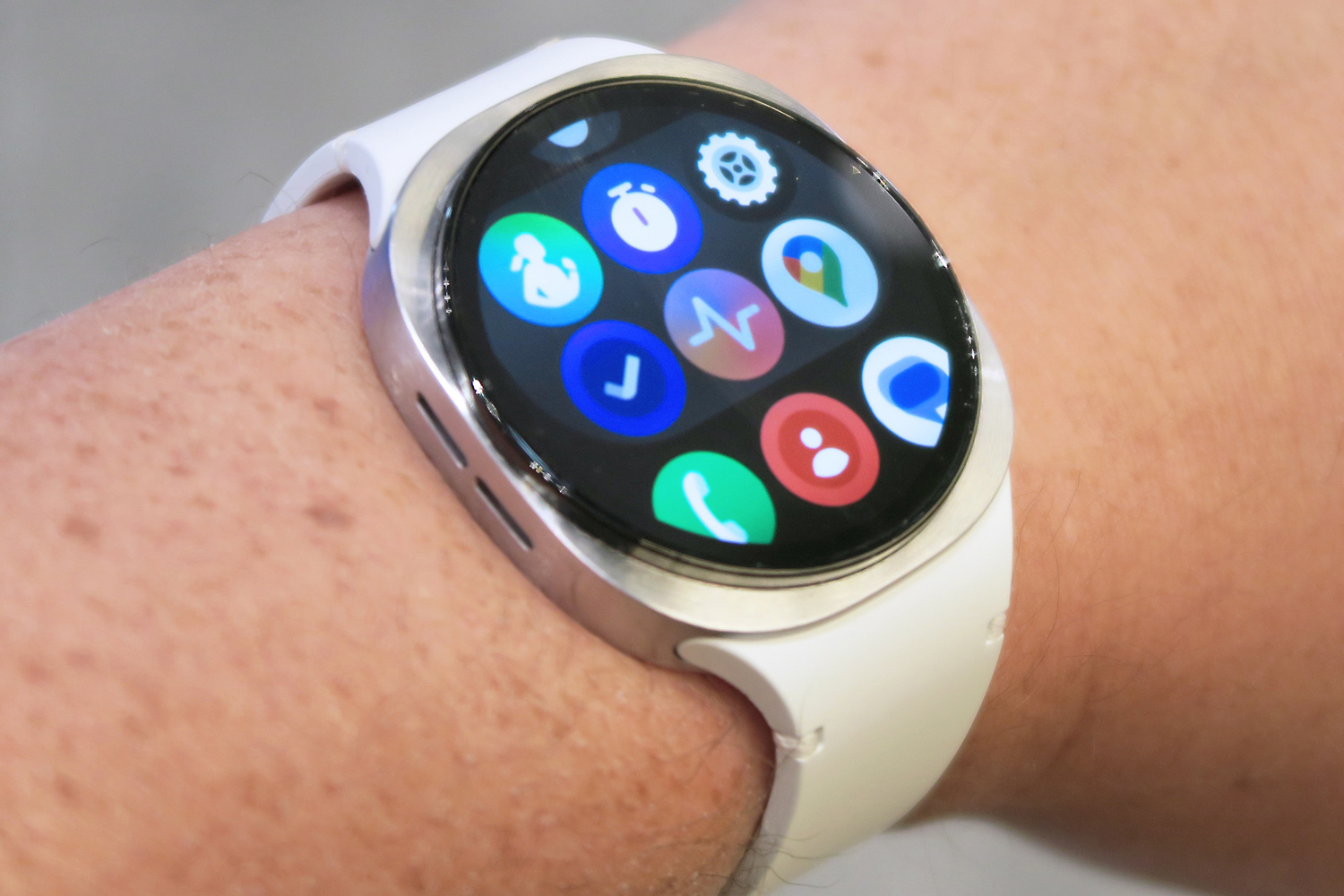Clapping eyes on the new Galaxy Watch 8 smartwatch line – just announced at the Samsung’s July 2025 Unpacked event – felt like a real blast from the past. In one sense, this duo of new techy timepieces took me back to my first encounter with 2015’s Galaxy Gear S2 series, which also came in two distinct flavours: the ultra-modern Gear S2 and the more traditionally-styled Gear S2 Classic.
Like their now decade-old forebears, the standard Galaxy Watch 8 serves up clean lines and an unapologetically technological aesthetic, hewn from Armor Aluminium, while the Galaxy Watch 8 Classic – as the name implies – offers up a more conventional form, with a coin-edge bezel and lots of polished stainless steel.
The Galaxy Watch 8 lands in two sizes, as well as Bluetooth and LTE flavours – all with 32GB of storage. The 40mm versions cost a little more than the outgoing Watch 7, at £319 for Bluetooth and £269 for LTE; the 44mm model goes for £349 or £399. There’s only one size of Classic: 46mm, which will set you back £449 (or £499 with LTE).
That bezel isn’t just for show. Samsung has decided to bring back the rotation, letting you twist the bidirectional bezel to navigate the UI; from scrolling to changing media volume and more. I think it’s a great inclusion.
I’ve never understood smartwatches that commit to 100% touchscreen interaction, considering that trying to look at and hit touch targets on a small touchscreen whilst walking, running, swimming or carrying things can range from frustrating to physically impossible. Keeping physical controls at play on smartwatch allows for eyes-free interaction and more confident, definitive, direct input.
Beyond the bezel, both new Galaxy 8 watches also embrace the cushion form Samsung introduced with last year’s Galaxy Watch Ultra. I prefer a more rounded watch casing, but I can see value in the more square form from a practical standpoint, with Samsung claiming it’s more resilient. Handy if you’re prone to catching your watch on the world around you.
Both watches also gain the Ultra’s Quick Button – for quick access to features like a voice recorder or your favourite Samsung Health workout routine – and its quick-release Dynamic Lug system, for fast strap replacement. Samsung says, this also means better comfort and more reliable sensor performance, in a form that’s 11% slimmer than before – making it the thinnest Galaxy Watch yet.

On the technical side, expect a brighter display (now topping out at 3000nits) and an 8% larger battery (balancing out to deliver the same longevity as the Watch 7 series. The 3nm chipset from the previous generation is still running the show, paired to 32GB of storage.
As for software, the One UI Watch 6 experience serves up a welcome consistency with the company’s latest smartphones. The Now Bar plays host to media controls and the like on your preferred watch face, when needed. And thanks to Samsung’s tight relationship with Google, these are also the first Wear OS watches to boast Google Gemini on-wrist.
As well as controlling your smart home appliances with your voice, compatibility with Samsung’s own ecosystem means you can also ask Gemini to start a workout based a metric like calories, or ask for multi-step actions, like recommendations on locations near you, paired with messaging invitations to you friends.

If it’s wellbeing features you’re interested in, I was most intrigued by the updated sleep coaching, with Bedtime Guidance (after tracking your sleeping habits for a few days) letting you know when the optimum time to go to sleep will be, two hours in advance.
If you’re in the UK or Europe, the Galaxy Watch 8 series also gains certified sleep apnea detection. The sensor can also be used to assess your ‘Antioxidant Index’, letting you know whether you need to increase your veggie intake. I haven’t gotten my head fully around what carotendoid levels are, but after taking the watch off and pressing my thumb to the sensor, I know I need more of them.
As a fitness beginner, I’m also keen to try the Watch 8’s running assessment feature, which tracks you over a 12-minute run before serving up one of 160 potential running plans (which include coaching) spanning running a 5K to defeating a full marathon. As you follow the plan, difficulty can dynamically adjust, depending on whether you’re surpassing, or underperforming on a given plan.
So all in all, a fairly major upgrade, with enhanced interaction through that bezel on the Classic model and Google Gemini integration, notable wellbeing and fitness upgrades, a slimmer design with a brighter display, and all atop the existing repertoire of Galaxy Watch functionality.
Samsung also used Unpacked to drop a new Titanium Blue variant of the existing Galaxy Watch Ultra, to compliment its new Galaxy Z Fold 7 colour option. It gains all of the software upgrades of the Galaxy Watch 8 series out the box, as well as twice the storage at 64GB. The new blue Watch Ultra comes in a single 47mm LTE flavour, which will set you back £599.
Read the full article here
